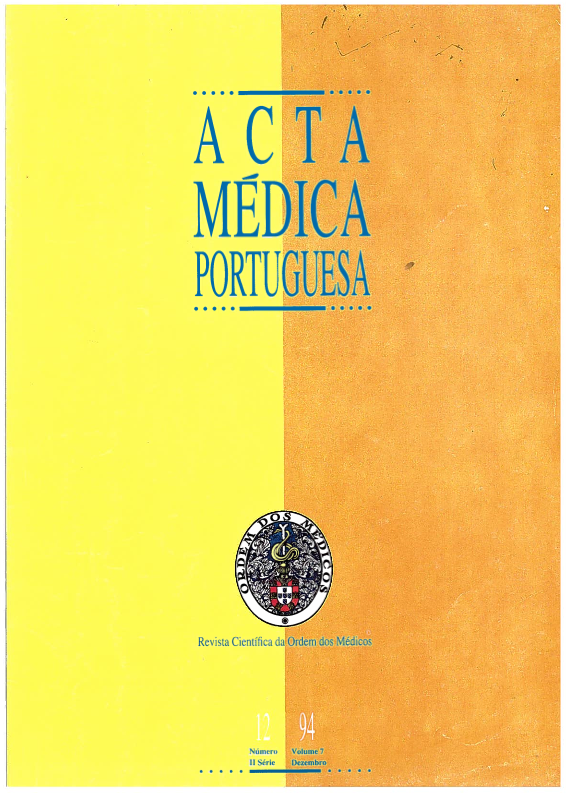Características Antropométricas Maternas. Risco de atraso de crescimento intrauterino.
DOI:
https://doi.org/10.20344/amp.3023Resumo
The aim of this study was to evaluate the association between maternal nutritional factors and intrauterine growth retardation (IUGR). We studied 1233 mothers who delivered single term newborns: 144 IUGR-birth weight less than one 10th percentile for sex and gestational age and 1119 controls-birth weight between the 10th and the 90th percentile. Maternal anthropometric factors (height, weight before and at the end of pregnancy, total and weekly weight gain and body mass index) were stratified according to quartiles of distribution in the studied population. Unconditional multiple logistic regression was used to estimate odds ratios (OR), adjusting each anthropometric parameter for non nutritional confounders (parity, smoking, gestational illness and history of low birth weight) and the effect of prepregnancy weight or weight gain. Mothers of IUGR cases showed significantly lower mean values of pre and end pregnancy weight, body mass index and total or weekly weight gain. Compared to the reference category (first quartile) women in upper quartiles of total or weekly weight gain, or end pregnancy weight showed significantly lower risks. For a total weight gain of 10-11 kg an OR of 0.43 was found, and that for a weekly gain of 238-297 g was 0.35. An end pregnancy weight between 63 and 68 kg had an OR or 0.45. However, compared to the second no evident benefit was found for the third or fourth quartiles of weight gains, where an increased risk of macrosomia can be anticipated. These results indicate that attitudes during prenatal care towards adequate weight gains may further reduce the risk of IUGR and the associated morbidity and mortality.Downloads
Downloads
Como Citar
Edição
Secção
Licença
Todos os artigos publicados na AMP são de acesso aberto e cumprem os requisitos das agências de financiamento ou instituições académicas. Relativamente à utilização por terceiros a AMP rege-se pelos termos da licença Creative Commons ‘Atribuição – Uso Não-Comercial – (CC-BY-NC)’.
É da responsabilidade do autor obter permissão para reproduzir figuras, tabelas, etc., de outras publicações. Após a aceitação de um artigo, os autores serão convidados a preencher uma “Declaração de Responsabilidade Autoral e Partilha de Direitos de Autor “(http://www.actamedicaportuguesa.com/info/AMP-NormasPublicacao.pdf) e a “Declaração de Potenciais Conflitos de Interesse” (http://www.icmje.org/conflicts-of-interest) do ICMJE. Será enviado um e-mail ao autor correspondente, confirmando a receção do manuscrito.
Após a publicação, os autores ficam autorizados a disponibilizar os seus artigos em repositórios das suas instituições de origem, desde que mencionem sempre onde foram publicados e de acordo com a licença Creative Commons









